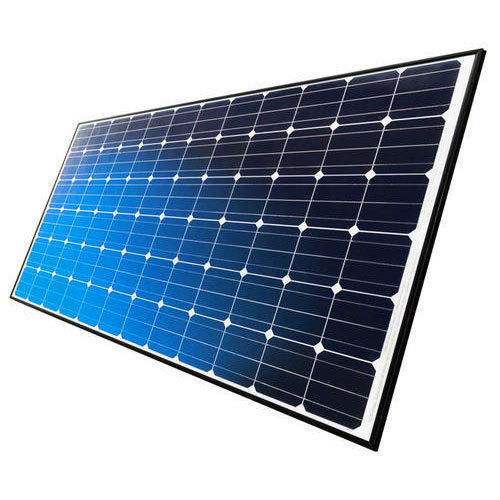
Overview
Monocrystalline solar panels are the most popular solar panels used in rooftop solar installations today. One of the reasons people tend to choose monocrystalline solar panels is because of how they look. The solar cells within monocrystalline panels are a single, flat black color, which makes them popular among homeowners.
You can identify a monocrystalline panel by the shape of the silicon wafers, which are shaped like squares with the corners cut off.
Construction
Monocrystalline solar panels get their name from how they are made. Each of the individual solar cells contain a silicon wafer that is made of a single crystal of silicon. The single crystal is formed using the Czochralski method, in which a ‘seed’ crystal is placed into a vat of molten pure silicon at a high temperature.
The seed is then drawn up and the molten silicon forms around it, creating one crystal. The large crystal, also called an ingot, is then sliced into thin wafers that are used to make the solar cells.
Usually, a monocrystalline panel will contain either 60 or 72 solar cells, depending on the size of the panel. Most residential installations use 60-cell monocrystalline silicon panels
Performance
Monocrystalline solar panels usually have the highest efficiency and power capacity out of all types of solar panels. Monocrystalline panel efficiencies can range from 17% to 22%.
Because monocrystalline solar cells are made out of a single crystal of silicon, electrons are able to flow easier through the cell, which makes the PV cell efficiency higher than other types of solar panels.
The higher efficiency of monocrystalline solar panels means that they require less space to reach a given power capacity. So, monocrystalline solar panels will usually have a higher power output rating than either polycrystalline or thin film modules.
In other words, you would need less monocrystalline solar panels in your solar power system to generate the same amount of power that, say, a greater number of polycrystalline solar panels would. This makes monocrystalline solar panels ideal for people with limited roof space.
Cost
Because of the way that monocrystalline panels are manufactured, they end up costing more than other kinds of solar panels. Their high efficiency and power ratings also bump up the price. Most premium solar panels, like the SunPower X-series and the LG NeON panels, are monocrystalline. Because of the way that monocrystalline panels are manufactured, they end up costing more than other kinds of solar panels. Their high efficiency and power ratings also bump up the price. Most premium solar panels, like the SunPower X-series and the LG NeON panels, are monocrystalline.
According to the Lawrence Berkeley National Laboratory, monocrystalline solar panels sell for about $0.05 per watt higher than polycrystalline modules. As solar technology and manufacturing has improved, the price difference between polycrystalline and monocrystalline panels has shrunk.